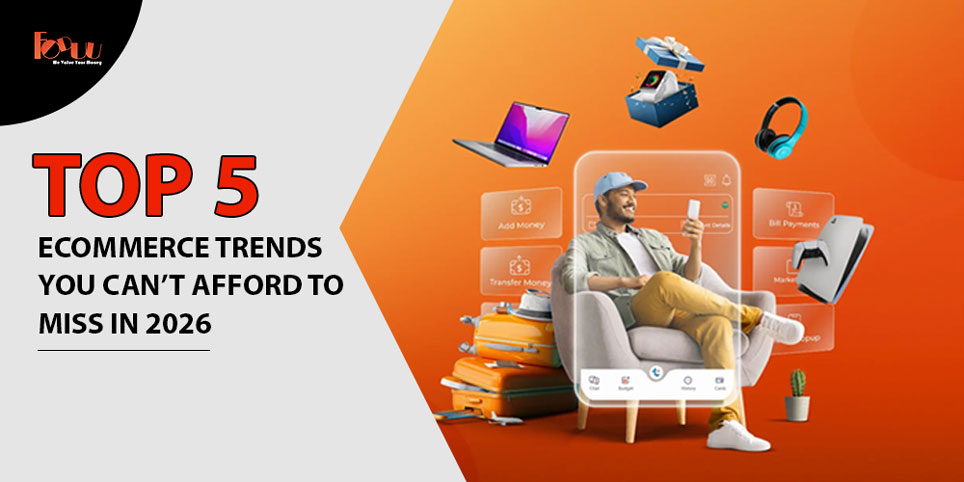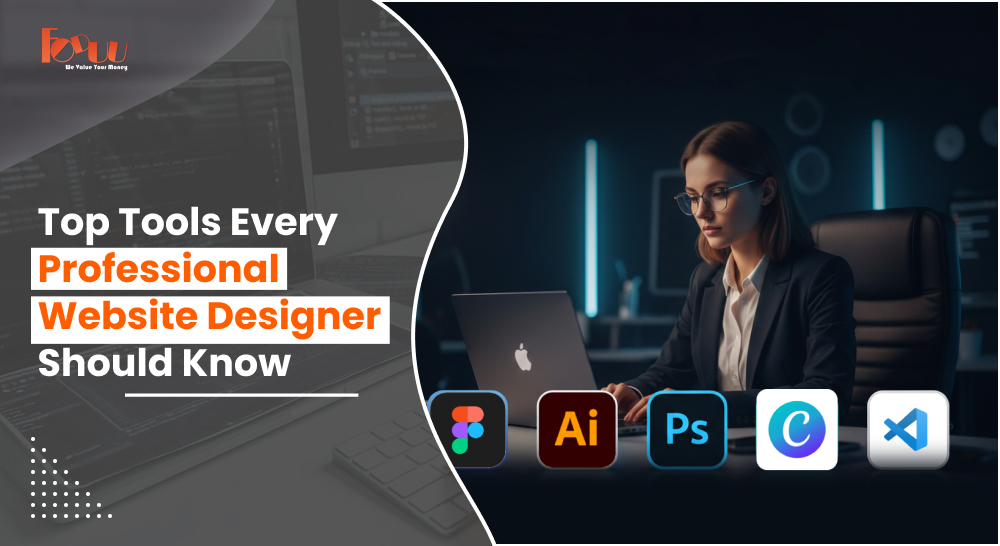Potential transformative technologies in the past couple of years are AR and VR. Recently, AR and VR are making a difference in website design. Both technologies enhance user experience, creating an immersive and interactive environment that traditional web design fails to capture. The role of AR and VR in website design, together with their advantages, areas of application, challenges, and further prospects of development, is explained in the following paper.
Understanding of AR and VR
AR superimposes digital data and images onto the physical world, enhancing the real environment for a user. Virtual objects and physical objects are integrated so seamlessly that a user cannot differentiate between the two, based on technologies such as cameras, sensors, and display.
On the other hand, VR offered full immersion in the digital world. It made it possible for users to enter the artificial world with the help of VR headsets and controllers that followed their movements, giving a 360-degree view of the virtual space. VR isolated the user from the outside or real world; it presents an experience that is absolutely synthetic.
Benefits of AR and VR in Website Design
1. Improved User Engagement:
AR and VR make interactivity and immersion possible, both of which escalate user engagement. A user will scroll and spend time on websites with interactive AR or VR content, which will boost retention and, hence, conversion metrics.
2. Enhanced User Experience
AR and VR will make complicated information simple to understand by being made visual and interactive. This, in turn, improves the user experience, making the sites more intuitive and user-friendly. For instance, AR can enable users to see how products would look in their surrounding environment, and VR can provide virtual tours of real estate
3. More Interactivity
AR and VR integrated websites offer several interactive elements that traditional websites just cannot. It has options for interactivity like virtual try-ons, 3D visualization, immersive storytelling, among others, that such a website can offer—one leading to a memorable user experience.
4. Competitive Advantage:
Integrating AR and VR into website design will give a company a better competitive edge. Since AR and VR are still quite new in web design, early adapters will get the differentiation from their competitors by attracting the users who are tech-savvy and are regarded as innovators.
Applications of AR and VR in Website Design
1. E-commerce
AR and VR can transform the world of e-commerce, for instance, with AR, customers can view products in their space before buying them. An example of this can be from a few furniture retailers such as IKEA, which have already put into practice AR to make customers feel like they know how furniture would look in their house. VR for an equal store so any customer can walk around in the store and shop around like he or she is standing in a real physical store.
2. Real Estate
This is another area where VR does wonders. Prospective buyers have an opportunity to take the slideshow in VR and in so doing, understand the property from anywhere in details without having to visit the said property physically. This works very well for international buyers or persons simply running short of time to visit properties.
3. Education and Training
Weblink-based learning portals can make learning more engaging by including AR and VR. AR would give interactive learning materials, and VR would add on more by allowing trainees to be trained in areas of interest through simulations. For instance, medical students can practice surgeries in a virtual environment. They can have enormous experience without risks that comes with real life procedures.
4. Tourism and Hospitality
It can provide virtual tours to customers about any destination, hotel, or resort in the tourism and hospitality industry with the support of VR, besides enabled informed decisions for the customers on where to go. AR can interactively give guides and information about landmarks and sites to further improve tourist experience.
5. Entertainment
The entertainment industry is able to offer engaging and immersive experiences to visitors through AR and VR. Virtual concerts and other events can be witnessed through these technologies, and at the same time, interactive storytelling intrigues audiences. Websites in this genre would then be able to feature exclusive AR and VR experiences far beyond the reach of traditional media.
Challenges
The incorporation of AR and VR in website design presents some challenges:
1. Technical Complexity
AR and VR implementation in website design are complex and require certain technical competencies and skills to do so. For example, one should be able to develop 3D models and animate them, which needs a high level of proficiency in the use of AR/VR development platforms. This would be a hard task for a small or technically low-end business entity.
2. High Development Costs
This is yet another domain where the creation and maintenance of AR and VR content may turn out to be costly. High-quality 3D models, animations, and VR environments usually demand immense work and resources. Making such resources work across different devices and browsers can further skyrocket development costs.
3. AR and VR content can be resource-intensive
They need robust hardware and high-speed internet connections. Making sure that websites perform well across different devices and browsers—including lower specification models—can be challenging. Developers must optimize AR/VR content to provide a smooth user experience without compromising on quality.
4. User Accessibility
It involves how the added functionality of using new multimedia forms such as AR and VR may prove un resourceful on lower hardware or poor internet network conditions, thus demanding a performance guarantee across a wide range of devices and browsers. Not every user will have the devices to access AR and VR, whether it is a VR headset or an AR-ready smartphone. This thus creates a limit to the audiences that will view AR and VR content, possibly missing some of the targeted viewers. Giving the rest alternative experiences without AR/VR tech will go a long way in making this inclusive.
Future Potential of AR and VR in Website Design
1. Future adaptation
As AR and VR become more affordable and easier to use, their day in website design is not far off. Hardware and software improvements will also simplify the AR and VR creation process, implementation, and integration with the website. This means development will be on the rise, being used in more and more industries.
2. Greater Personalization
In addition, the AR and VR could further be used in highly customized experience possibilities. Powered by user data and preference, websites offer users personalized augmented and virtual reality content, thus maximizing satisfaction and drawn engagement. This can manifest in totally personalized virtual shopping assistants or even completely virtually managed to create unique experiences for the users.
3. Integration with AI & IoT
AR and VR, when combined with AI and IoT, integrating this technology, can create new dimensions toward website designing. By offering intelligent interactions and real-time data analysis, AI can empower the experiences that AR and VR bring. IoT devices will be able to create an ambiance in which the devices are interconnected, thus letting users have interactions with AR and VR content in new and innovative ways.
4. Evolution of User Interfaces:
The growth of AR and VR will be linked to the development of new user interfaces and interaction paradigms. This includes the use of gesture-based controls, voice commands, and haptic feedback to create intuitive and immersive ways for users to interact with websites. This would mean people moving away from traditional point-and-click interfaces to more natural and engaging interactions.
5. WebXR Adoption
What will be at the core of website design in the future is WebXR—a standard for AR and VR experiences on the web. The future development of WebXR will provide developers the right tools and frameworks to build seamless operations of AR and VR experiences in the interface and experience themselves, working across different browsers and devices. This standardization will be the force that drives adoption with AR and VR in website design, making it more accessible to both developers and users.
Conclusion
The implementation of AR and VR in the design of websites is on the brink of reforming the process through which users experience digital content. These technologies have the ability to increase user interest, engagement, and overall experience when applied to website interface designs. Although they present a high level of technical complexity, development costs, and are still not easily accessible to users, the promise in the future regarding website design is enormous.
Both AR and VR will only continue to be adopted in website design as they are developed further and more democratized, providing for more engaging, personalized, and authentic web experiences. In fact, further development and democratization of the said fields will make the experience of a website more immersive, personal, and unique over time. This helps businesses and developers embrace these technologies and allows them to build compelling experiences that will give them an edge in the digital world.

-and-Virtual-Reality-(VR)-in-Website-Design.png)


